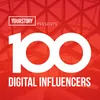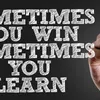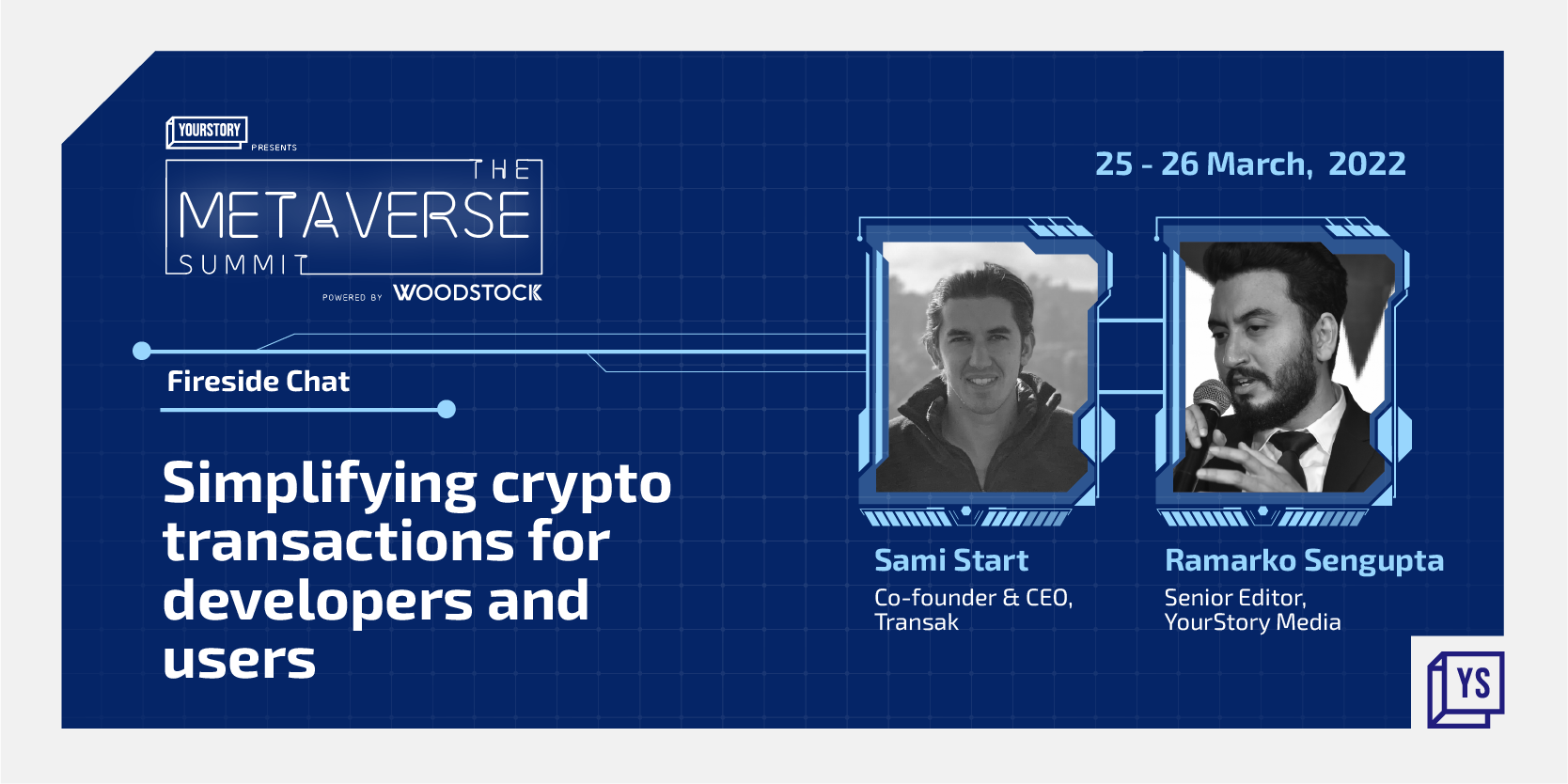Unblock creativity, harness technology: how companies can sustain a culture of innovation
Entrepreneur-academic Vivek Wadhwa has co-authored a compelling book on new waves of disruption – and how firms can thrive only by continuous innovation.
Launched in 2012, YourStory's Book Review section features over 280 titles on creativity, innovation, entrepreneurship, and digital transformation. See also our related columns The Turning Point, Techie Tuesdays, and Storybites.
A wealth of checklists, tips, and examples of business innovation is featured in the authoritative new book, From Incremental to Exponential: How Large Companies can See the Future and Rethink Innovation, by Vivek Wadhwa, Ismail Amila, and Alex Salkever. Large firms have a lot to learn from the mindset and tool belt of startups and digital innovators.
Tech transformation, capital market changes, and shifts in cultural perceptions about startups are driving a new wave of innovation. “The Golden Age of innovation is now,” the authors begin.
Entrepreneur-consultant Vivek Wadhwa has been researching and teaching technology development and innovation for over a decade at universities such as Stanford, Duke, Harvard, and Carnegie Mellon. Ismail Amla is Chief Growth Officer of Capita, and Alex Salkever is the coauthor (with Vivek) of The Immigrant Exodus, The Driver in the Driverless Car, and Your Happiness Was Hacked.
Some of the innovation capabilities and agility of startups have been incorporated into tech giants like Google, Microsoft, and Amazon as well. Some legacy companies in slow-changing industries have also transformed themselves, such as Walmart and NextEra Energy.
Here are my key takeaways from this compelling 215-page book, summarised as well in the table below. See also my reviews of the related books Innovation Ultimatum, Seeing Digital, The Invincible Company, Rebel Talent, Customer Innovation, The Serendipity Mindset, The Startup Way, and The Founder’s Mentality.

Tech transformations
The converging and compounding effects of exponential technologies are creating first-order and second-order disruptions. Businesses that leverage exponential technologies can drive exponential change in markets, the authors explain.
AI went from “nascent to nearly omnipresent” in roughly five years, and is reducing the cost of predictions. Cheap, powerful, and compact IoT sensors make factory processes transparent and tunable.
“It’s when exponentially advancing technologies combine that the magic happens,” the authors evocatively describe.
Ecommerce, wearable devices with healthcare applications, warehouse robots, and delivery drones are some visible manifestations of digital transformation. Smartphones are gaining more utility power as devices for media, navigation, transactions and healthcare.
For example, Tesla is both a car company and an AI company, and thus drives second-order innovation. Its electric battery GigaFactory dovetails with its home-battery offerings as well.
Amazon started off as an online retailer but also “first cracked the nut of rented computing on a massive scale” and launched its lucrative Amazon Web Services (AWS). Its other forays include voice commerce and logistics.
“Amazon is the largest logistics and transportation company most people don’t know about,” the authors describe. The Amazon Go physical store is like a “human-powered AI lab,” they add.
Apple has a slew of disruptive products in Apple Watch and Apple Pay. SpaceX, Google, and Amazon are also entering the Internet access space and will disrupt network providers.
Retail innovators like Warby Parker (eyeglasses), Allbirds (wool sneakers) and Instapots (cooking appliances) started off online and then added physical stores. PayPal and Transferwise are challenging Western Union in money transfer.
BuzzFeed rode the wave of catchy content instead of just “old-style journalism.” Ex-BuzzFeed COO Jon Steinberg launched Cheddar as a combination of engaging content and OTT programming, combining elements of BuzzFeed and Netflix. Responding to threats from Netflix and YouTube TV, content studios like Disney and Comcast launched Hulu to enter the OTT race.
In addition to tech transformation, other factors like social and environmental responsibility are also important for the long run. The authors caution against potential for social unrest, spying and even destructive uses that tech can be applied to.
Disruption 2.0
The authors identify new forms of disruption different from what was originally described by innovation experts like Clayton Christensen. The new disruptors are not coming just from the low-end segments of existing markets, but from the high end and from outside sectors as well.
Dollar Shave Club came “literally out of nowhere”. Tesla started off with expensive sports cars. Uber began with limousine rides, and then disrupted the taxi market; it rode the tech trend of cheaply available location data thanks to Google Maps.
“Technology development and product adoption are occurring so much faster today than even a decade ago that the nature of the innovation game has changed radically,” the authors emphasise.
New forms of disruption include business models and platforms. “Ratings and reviews have become more important than brands and advertising,” the authors describe. “Social acclimatisation to online trust” has spurred the fortunes of Uber, Yelp, and eBay.
SpaceX, originally ridiculed by some, came up with innovations that larger, well-capitalised aerospace incumbents did not pull off. Dollar Shave Club did not innovate in razor blades, but shook up the market with viral digital marketing and a subscription model.
New business models and capabilities have emerged in China’s stars such as Xiaomi, Alibaba, TikTok, and WeChat. Many of these models are now being copied by Western players, the authors observe.
Knowledge worker tools like Slack, Asana, and Trello have made it even easier for smaller and nimbler innovators to collaborate across the world. Kickstarter, Indiegogo, and Patreon support innovators through crowdfunding.
The “digital scalpel” of online advertising is effectively open for smart innovators as well to grow faster and more cheaply. RXBAR protein bars grew digital-first and with subscriptions and communities, before supermarket distribution.
The authors describe a range of former innovators that have joined the “Hall of Toast” – RadioShack, Sears, Yahoo, Xerox, Kodak, 3Com, Thomas Cook, Gannett, and Forever 21. Companies that do not keep up with “the pace of change and the breadth of innovation” are likely to become less relevant.

Innovation challenges for large firms
Blocks to innovation in large firms include lack of patience, distance, resources, accountability, and political support. They are unable to listen and learn (“not invented here” syndrome), the authors caution. They have inappropriate culture, and the wrong people and roles (established managers are not necessarily good innovators).
Examples include HMV (unwilling to listen to advice on digital shifts), Mozilla SensorWeb (shut down in a year), Nike FuelBand (killed due to slow product cadence), and Kodak (unable to capitalise on its own digital camera invention and move away from film).
In response to Silicon Valley’s tech prowess, some large incumbents are setting up outposts, investment arms, and R&D labs in the region. The authors caution that many of these outposts have failed because of lack of deep commitment from the mothership and disconnect from real customers. “Osmosis is a weak force for absorbing innovation culture,” they write.
Top-down innovation teams may spot new trends and opportunities, but it is harder to spot new business models and change existing ones, or to really connect to new needs and habits of customers.
Instead, investing in startups may be a better option for large firms, the authors advise. Successful innovation comes from the “evangelical zeal that can come only from a true founder mentality,” they write.
If creative opportunities are not available in large firms, talented employees will leave, the authors caution. Eric Yuan was not satisfied with the performance of Cisco’s video-conferencing tool, particularly for the lower end of the market – he left to start Zoom.
Innovation cultures
Innovative companies give employees permission, time, space, channels, and resources to suggest and try out innovative ideas. They conduct facilitated brainstorming exercises with a mix of individual and group activities.
Idea suggestions can be made at annual events or, preferably, as a continual practice. But leaders should read these suggestions, recognise and reward innovative ones, and support their development, the authors urge.
Innovative firms leverage out-of-the-box thinking, platforms, and close customer connects. The authors describe a range of innovative tactics used as well, such as contests and practices like design thinking.
For example, Patagonia was a pioneer in counter-intuitive approaches (Don’t buy this jacket) to promote environmentally sustainable practices. It used recycled materials, promoted used clothing, and urged customers to think twice before buying new items.
eBay and Airbnb leverage transactional platforms, and Salesforce uses the innovation platform approach for independent developers to build on its framework. Other examples include M-Pesa, Uber food delivery services, and app stores. John Deere and GE are also dabbling in platforms.
Toyota treats its employees as “founts of ideas,” and 3M and Google encourage employees to spend 20 percent of their time on relevant side projects. Such “inclusive innovation” has led to over 22,800 patents at 3M.
The mountain bike industry took off when bike manufacturers began to pay attention to what home inventors were doing. They jury-rigged bikes with fatter tires and stronger brakes for rough terrain.
Amazon’s internal digital suggestion box lets employees submit ideas – Charlie Ward’s suggestion led to the creation of Amazon Prime, and the subsequent logistics business. Amazon’s “API manifesto” requires internal businesses to convert its tools into software offerings for other companies as well.
Amazon gives “startup grants” for creative ideas submitted by employees. Support is given to small autonomous inter-disciplinary teams (the “two pizza” rule).
“For its part, Amazon has elevated failure to a high art. It is one of the few very large companies that not only accepts failure but expects it in its most ambitious experimental new products and services,” the authors explain.
Other companies also encourage learning from failure. Coke gives out Celebrated Failure Awards along with its annual Global Innovator Awards.
Google has had a major internal startup success in Gmail. Apple, however, is among the most top-down companies in terms of product innovation and management, according to the authors.
3M has an annual poster showcase of new ideas by employees; this idea fair led to new products like painter’s tape and clear bandages. Pixar gave a chance for disgruntled “black sheep” artists to try their hand at the new movie The Incredibles 2, which became a hit.
DeWALT closely observed how its customers used portable and plugged tools, and came up with the FlexiVolt line of adjustable-voltage batteries. This led to other products like electric lawnmowers. The company has a blend of top-down and bottom-up innovation, and engages with startups through Techstars accelerators as well (see YourStory’s Startup Hatch series of corporate accelerator profiles).
One chapter in the book documents a range of innovation tactics. Examples include the XPrize, DARPA Grand Challenge, Innovate UK portal, ShurTech’s school contests for creative product usage, Bose’s crowdfunding for an earbuds product validation, and Apple’s borrowing of technologies developed by others.
“Two CEOs who have understood the importance of culture in transforming iconic businesses are Lou Gerstner of IBM and Satya Nadella of Microsoft,” the authors observe. IBM’s new CEO, Arvind Krishna, will have to change the company’s culture yet again.

Innovation advantages of large firms
Despite the shifting market conditions of today, incumbent firms do have innovation advantages they can leverage if they adopt the right culture and strategy. These advantages include scale, funding, production, infrastructure, expertise, distribution, data, brands, channels, and relationships.
Large firms successfully innovating using these strengths include Sainsbury’s Future Brands innovation programme. Its “Taste of the Future” initiative lets outside innovators experiment with new food products on the supermarket’s customers, and taps consumer willingness to try out new products. This helps the company spot new trends and market the products at scale.
ABinBev and MillersCoors have bought stakes in premium microbeer brands and marketed them across their extensive networks. ABinBev has learnt from them and launched its own microbeers such as Shock Top. Heineken has bought out independent beer brand Lagunitas as well, the authors observe.
One chapter provides in-depth profiles of innovation turnaround at four large firms, "from dinosaurs to eagles." Logitech, Microsoft, NextEra Energy and Tech Mahindra have successfully transformed their culture and market performance.
Bracken Darrell, CEO of Logitech, reinvented the PC peripherals company as a design firm in 2012, with adequate budgets and recruitment of talent. Principles of “clarity, craft, effortlessness, soul and magic” were promoted for all products. This creative and critical-thinking approach led to a string of award-winning products.
Satya Nadella led the transformation of Microsoft “from evil empire to cool kid,” the authors evocatively explain. He moved towards a style of compassion and empathy, away from Bill Gates’ style of berating employees and Steve Ballmer’s on-stage screaming tactics.
The company focused more on open source, cloud and mobile than Windows. It also acquired LinkedIn and GitHub, and embraced openness to external ideas.
Wind energy firm NextEra Energy foresaw the trend towards renewable energy, and invested in energy storage, natural gas pipelines, and smart grids using ML and automation. It has an annual contest for employee ideas called Project Accelerator, and 5,600 ideas of 18,000 submitted ideas from 2013-2019 were regarded worthy of exploration.
CP Gurnani reinvented Tech Mahindra at a time when Indian IT services firms were becoming complacent but were at risk from trends like automation. Its New Age Delivery platform leveraged analytics, agile practices, service capability marketplaces, gamification, and UX.
Ideas for strategy and practices are crowdsourced. The company also worked with AT&T to build Acumos as a next-gen AI platform and marketplace, and has a team researching quantum computing as well.
Innovation in government
The book also covers some government attempts at innovation. For example, governments and industry players in many countries have tried to set up regional innovation clusters in a top-down manner.
However, several clusters have failed because they did not foster the right types of relationships, open networks, diversity, and attitudes of non-transactional cooperation. See my book review of The Startup Community Way in this regard.
Successes of innovation in government include the UK’s Behavioral Insights Team, nicknamed as the Nudge Unit. Its insights helped improve organ donor programmes through a default opt-in strategy.
New York city has implemented data-based management systems to improve city services. Washington DC’s ParkMobile app leveraged the benefits of mobile payment and data insights, and was eventually purchased by BMW. Milwaukee, Wisconsin is experimenting with mini-libraries in laundromats for poor mothers to encourage reading practices among children.
The road ahead
The authors also identify future trends and developments in the space of innovation and creative clusters.
For example, though Silicon Valley has advantages of open networks, embrace of talented immigrants, coopetition, and fluid movement of talent, the model has challenges, the authors caution. These include less racial and gender diversity, short-term orientation of venture capitalists, and incidents of bad practices (Theranos, Uber).
People power, ambitious targets, culture change, and innovation tactics can help companies succeed in the long run. “On the horizon lurk new waves of change,” the authors observe.
“Disruption is beginning to break out wherever technology can be applied, and existing companies need all hands on deck,” the authors sign off.
(Edited by Megha Reddy)
Edited by Megha Reddy













![[Funding alert] Men’s lifestyle brand DaMENSCH raises Rs 122.5 Cr in Series B led by A91 Partners](https://images.yourstory.com/cs/2/ba9e8080834311ec9e7e95cb06cf6856/damensch1-1646024956689.png)
